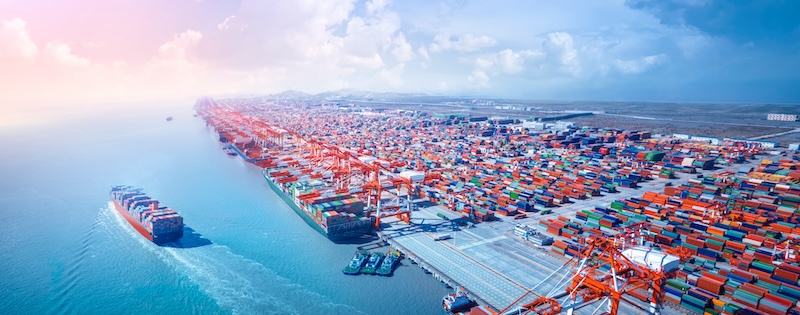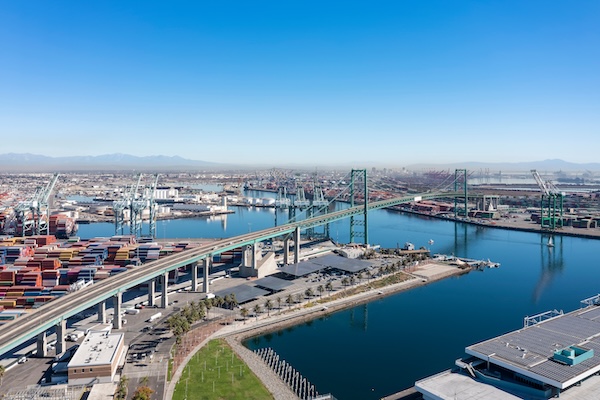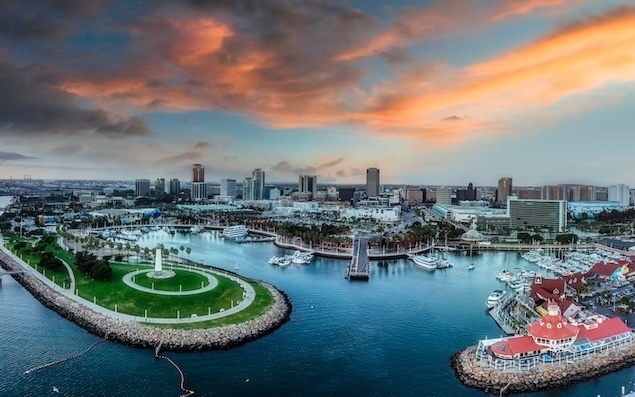Cleaning Up Ports with Advanced Energy Storage Solutions
The ports of the world need our attention. With the maritime sector on track to account for 17 percent of the world's total emissions by 2050, ports worldwide are grappling with the urgent need to reduce their emissions. Not only are seaport activities significant contributors of greenhouse gases, but they also have an outsized impact on the health and air quality of nearby communities, underscoring the urgency to act. This is because the industry runs on diesel, from the sludgy heavy fuel oil (HFO) used in cargo ships to the standard fuel that powers many cranes, drayage trucks, and other equipment.
Spurred by the availability of new clean energy technologies and government incentives, electrification is emerging as a promising solution to longstanding emissions reduction challenges. While efforts to integrate more alternative fuels and batteries in ships themselves (to be hybrid or all-electric) are certainly underway around the globe, ports are ready to adopt a variety of clean technologies today. Thanks to the Clean Ports Program established under the 2022 U.S. Inflation Reduction Act, nearly a dozen U.S. ports have made climate commitments using an available $3 billion for port facilities to purchase or install zero-emission equipment.

To make the most effective use of available funds, and make sure these commitments are met, the industry must ensure it's using the right technologies to electrify. Port operators should keep in mind that not all electrification solutions are universal fits for the shipping sector. Battery energy storage stands to play a large role; as the industry seeks to reduce its carbon footprint, newer alternative battery energy storage solutions offer significant advantages over conventional lithium-ion batteries. These battery chemistries offer safer, more cost-effective, and environmentally friendly solutions for facilities and vehicles looking to electrify. These technological advancements are vital for the maritime industry’s transition to cleaner operations.
Challenges in electrification
U.S. states like California have ambitious regulations coming into effect that will require certain vessels to reduce their emissions while at berth by at least 80 percent. The challenge is immense: it’s estimated that full electrification of a port will require 5 to 7 megawatts of available power just for port infrastructure, while a single cruise ship can demand an additional 10 megawatts to support its hotel load while docked (also known as cold ironing). This may pose challenges for many ports due to insufficient electrical infrastructure, especially during peak demand periods.

With the industry’s carbon footprint forecasted to grow by up to 4 percent every year, significantly reducing emissions will require expanding the focus beyond the ships themselves to include stationary storage that can help ports overcome grid bottlenecks and manage power consumption. Ports will need to leverage stationary storage, as well as adjacent technologies including microgrids, floating solar farms, and hydrogen or thermal storage, as part of their electrification efforts. These technologies can be used to augment power from the grid, either through direct generation or by storing power during low-demand periods and dispatching it when demand is high.
While battery storage can be a key enabler of electrification in ports, one major concern potentially stifling their adoption is known flammability hazards associated with high-density lithium-ion battery storage. Systems equipped with this technology are prone to experiencing thermal runaway from causes such as physical damage, overheating, or moisture infiltration. This phenomenon can create hard-to-extinguish fires that last for days or weeks. For example, a recent battery fire near San Diego, CA took 17 days and 8 million gallons of water to extinguish fully.
Ports can be hazardous environments. Cranes, forklifts, and loaders move a lot of equipment and cargo. Salt from the air can build up on battery cells, bridging terminals and causing shorts that lead to fires (as seen in the MS Brim fire in Norway in 2021). With such risks to deal with, ports opting to use lithium-ion batteries may need to seek out systems with advanced fire prevention and suppression measures which, in addition to being expensive, may not be feasible due to space or other constraints.

Considerations for energy storage
With their ability to provide clean and dispatchable energy, energy storage solutions can play a pivotal role in maritime electrification. Alternative non-lithium solutions are necessary to fully meet the industry's unique challenges. The good news is these are being designed with non-flammability and performance in mind, which can significantly improve reliability while reducing emissions and costs for ship owners and ports. These batteries are compatible with shore power systems, enabling ships to connect to clean electricity while docked, in addition to providing charge power for electric port vehicles such as e-drayage trucks and yard tractors.
The maritime industry needs to step up to the challenges of port electrification, and aggressively invest in advanced energy storage solutions. Innovations have emerged that can shape a cleaner, more sustainable future for the industry. As ports commit to electrification and sustainable practices, they address environmental concerns and set new standards for global trade sustainability. This complex transition is essential for the future of shipping, showcasing the industry's potential to lead in combating climate change.
 Mukesh Chatter is Co-Founder and CEO at Alsym Energy, which has developed an inherently non-flammable, non-toxic, non-lithium battery chemistry with system-level energy densities approaching lithium-ion, plus the ability to operate at elevated temperatures.
Mukesh Chatter is Co-Founder and CEO at Alsym Energy, which has developed an inherently non-flammable, non-toxic, non-lithium battery chemistry with system-level energy densities approaching lithium-ion, plus the ability to operate at elevated temperatures.
Alsym Energy, Inc. | www.alsym.com
Author: Mukesh Chatter
Volume: 2025 January/February









